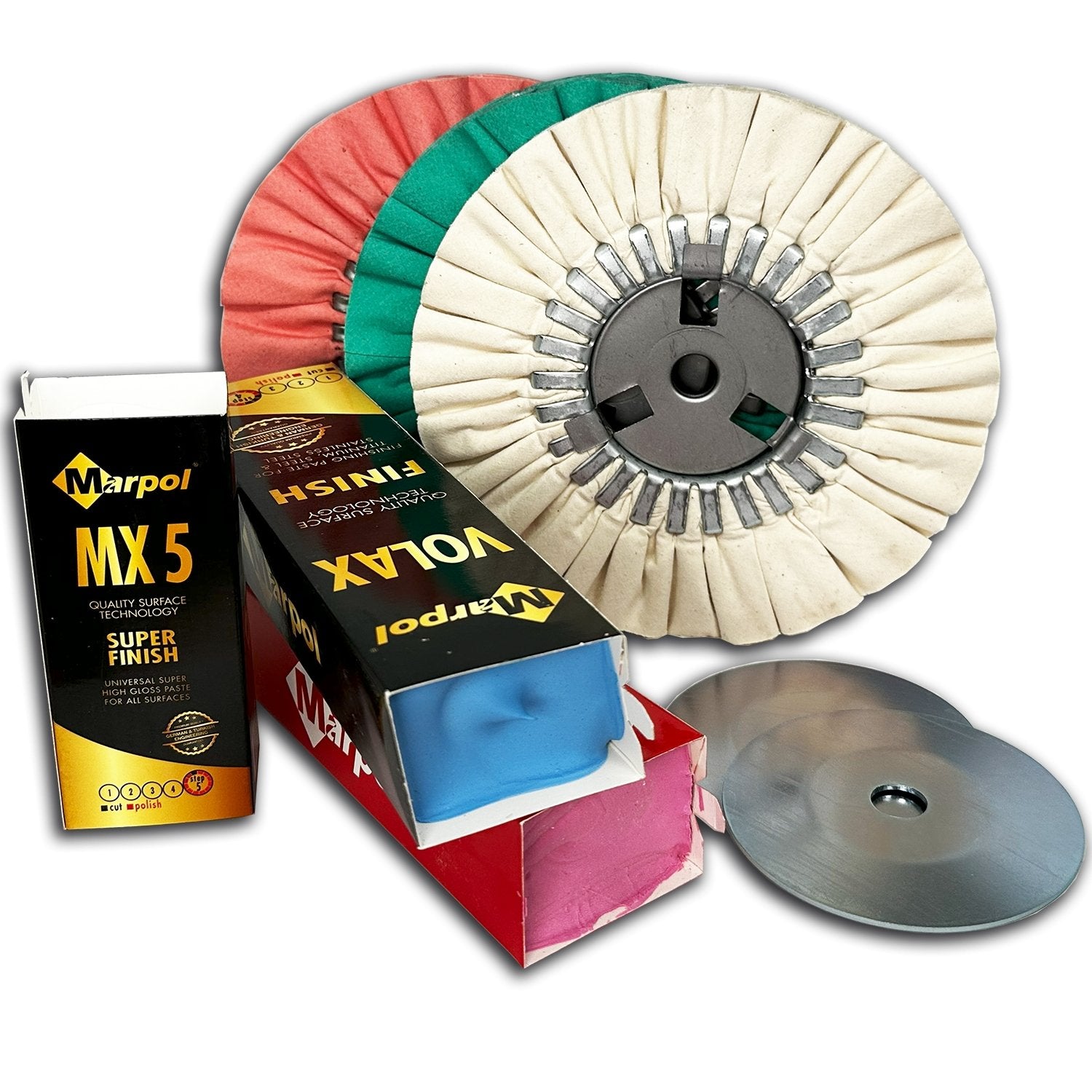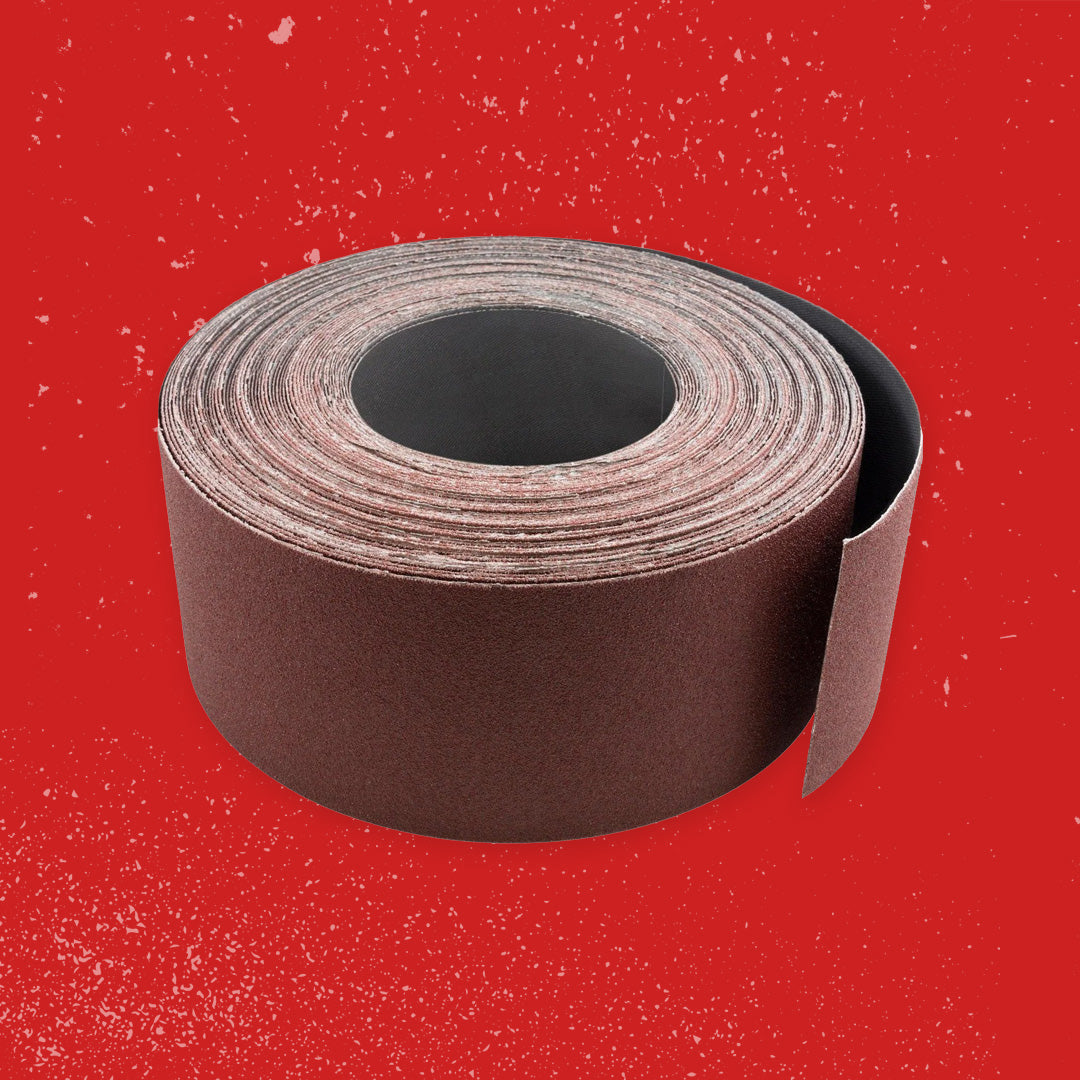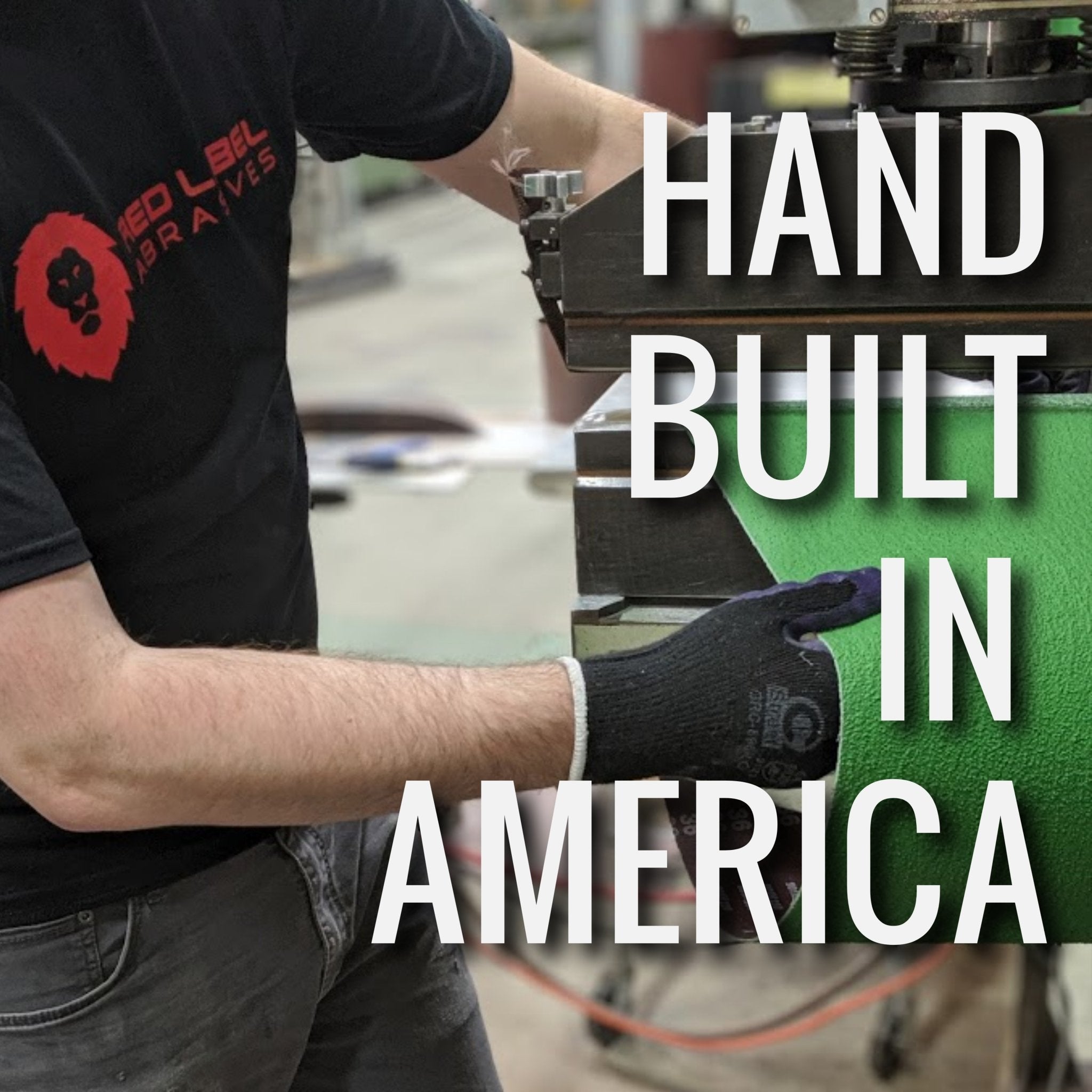Your Cart is Empty
Free Shipping over $150 (Excludes Oversized Products)
Free Shipping over $150 (Excludes Oversized Products)
Sanding Belts
Sanding Discs

Ceramic Vs. Zirconia: Which Is Better?
by David Kranker 5 min read

If you’re in the market for a new sanding belt for your stationary or portable belt grinder, you have a lot of abrasives to choose from. Almost all sanding belts used in industrial applications use a naturally occurring substance that has been refined, hardened, and processed to give them a strong finishing ability. However, this doesn’t mean that all sanding belts are identical or even created equal.
You’re likely familiar withaluminum oxide, which is the ‘workhorse’ of abrasive substances. It was originally developed to replace more brittle grains like garnet and is especially effective on soft and hardwoods, some grades of steel, and non-ferrous metals like aluminum. While it does the job well, you may need a stronger abrasive for intense and prolonged steel and metal grinding.
Ceramic andzirconia are both high-performance sanding grains that last a lot longer than aluminum oxide. They also sharpen with each use, enabling them to keep doing an effective cutting job until the grain is completely worn. Below is an overview of each one and how they compare to one another in performance.
Ceramic Sandpaper
Ceramic sanding belts are making a significant impact on the quality and efficiency of metal grinding applications. They are very popular in theknife industry for finishing high carbon steel. Ceramic abrasives provide the longest life and fastest cut rate out of any other type of abrasive grain. Their structure is more uniform than zirconia and their micro-crystalline habit enables them to break down in a more controlled manner and be used in a broader range of applications, including:
- Aluminum castings
- Stainless steel finishings
- Titanium alloys (commonly used in aerospace applications)
- Mild steel mill scale
During the grinding process, the grains on ceramic sanding belts break away in smaller fragments, which gives them a longer performance life than other abrasive grains. However, unlike zirconia, ceramic is especially sensitive to pressure and heat, so their use in such applications must be carefully engineered.
The ceramic sanding belts at Red Label Abrasives are available in different lengths and widths. They come in three different types of cloth backing for added versatility and durability:
- J weight, which is the lightest and most flexible of the three. Abrasives with J weight backing are commonly used for shaping knife scales (handles) and finishing metal surfaces.
- X weight, which has the widest range of applications, which is why it’s often used for ordinary machine sanding.
- Y weight, which is an extremely heavy duty cloth used for higher-intensity applications. Polyester is commonly used because it is both durable and strong.
Ceramic sanding belts are closed coated, which means that the ceramic grains cover the entire surface of the cloth-backed belt. Closed coat cuts more aggressively and provides a smoother finish since it has a higher grit-to-surface ratio. It is especially beneficial if you’re sanding harder woods because the larger pieces created during the sanding process won’t get caught between the grains and damage the workpiece surface.
Zirconium Oxide (Zirconia) Sandpaper
Made by die-casting, zirconia grain has a high heat resistance and is substantially stronger than aluminum oxide abrasives, which makes it a good choice for high-pressure grinding and machining applications. Zirconia belts, which work best in the 24 to 120 grit range, are regularly used in steel fabrication shops because they constantly deliver quality results in rougher manufacturing environments.
Although tougher than aluminum oxide, zirconia may have difficulties grinding mill scale, but the grain still offers a high-quality grinding job on:
- Stainless steel
- Tool steel
- Nickel alloy
- Aluminum
- Titanium
- Cast iron
- Carbon Steel
- Blades, rotors, and welds
Zirconia requires more pressure to sand, so the belts are better-suited for jobs on harder surfaces and not ideal for polishing. It does an excellent job of cutting and grinding stainless steel and can efficiently remove burrs from harder metals. Despite such aggressive usage, zirconia belts have a long working life: the grains are friable, meaning that the tips fragment as they wear, continually providing sharp cutting surfaces.
At Red Label Abrasives, we sell zirconia sanding belts in sizes up to 132” long. All of our zirconia belts come with Y-wgt cloth backing, which improve abrasive performance during heavy-duty applications. Like ceramic sanding belts, they are also closed coated, so the belt surface is entirely covered by the zirconia grains. This thorough coverage, combined with high heat resistance, helps ensure best results during metalworking applications.
Which Is Better?
Both zirconia and ceramic are tough resin-coated grains. They will last longer and remove metal and harder wood faster thanaluminum oxide or silicon carbide sanding belts. Both belts also have the ability to resharpen as they wear and both are primarily used on metal applications.
Generally speaking, zirconia sanding belts have greater heat and pressure resistance than ceramic ones, although you can get ceramic belts with fillers and top coats engineered to reduce heat buildup. On the other hand, you need to apply more pressure when you’re using a zirconia belt to sand metal, which means that these belts are great for hard surfaces but not so ideal for metal polishing. With ceramic belts, you don’t need to use as much pressure, so you can use them for polishing.
Other comparisons:
- When used with high-speed grinding machines, zirconia belts provide excellent sanding results. Ceramic belts aren’t as appropriate for high-speed grinding.
- Compared to zirconia, ceramic belts have a faster cut rate and longer lifespan.
- Zirconia belts are relatively budget-friendly while ceramic belts tend to be more expensive.
In the end, both types of belts are excellent choices. The decision will depend on a mixture of use and your preferences. If you need a grit higher than 120, ceramic is likely the better choice. Ceramic belts do last longer, but they are also slightly more expensive than zirconia belts.
Red Label carries multiple types of ceramic and zirconia belts and can tailor-fit a material to meet your needs. If you have questions or would like assistance in choosing the best belt for your application, you can speak with an abrasive technician at (844) 824-1956. We can also manufacture custom orders if you have a particularly unique application.
About Red Label Abrasives
Red Label Abrasives is a leading manufacturer of industrial abrasive products like zirconia and ceramic sanding belts, which deliver the performance you need to grind or micro-finish at each stage of your application. Our belts sand practically all industrial surfaces while resisting slipping, tearing, or overheating under heavy use. If you have questions or need assistance in selecting the right product for your application, please contact us today!
ABOUT THE AUTHOR
David Kranker is a writer and creative maker who has been covering the abrasive industry on the Red Label Abrasives Blog since 2020. David spends his time continually researching sanding techniques to provide readers with the latest and greatest information. In his free time, David utilizes abrasives for many different home and auto projects at his home in Delton, MI.
Our Most Popular Abrasives

EdgeCore Ceramic Sanding Belts

EdgeCore Ceramic Flap Discs

Buffing Kit
Shop By Product Category





Why Choose Red Label?







